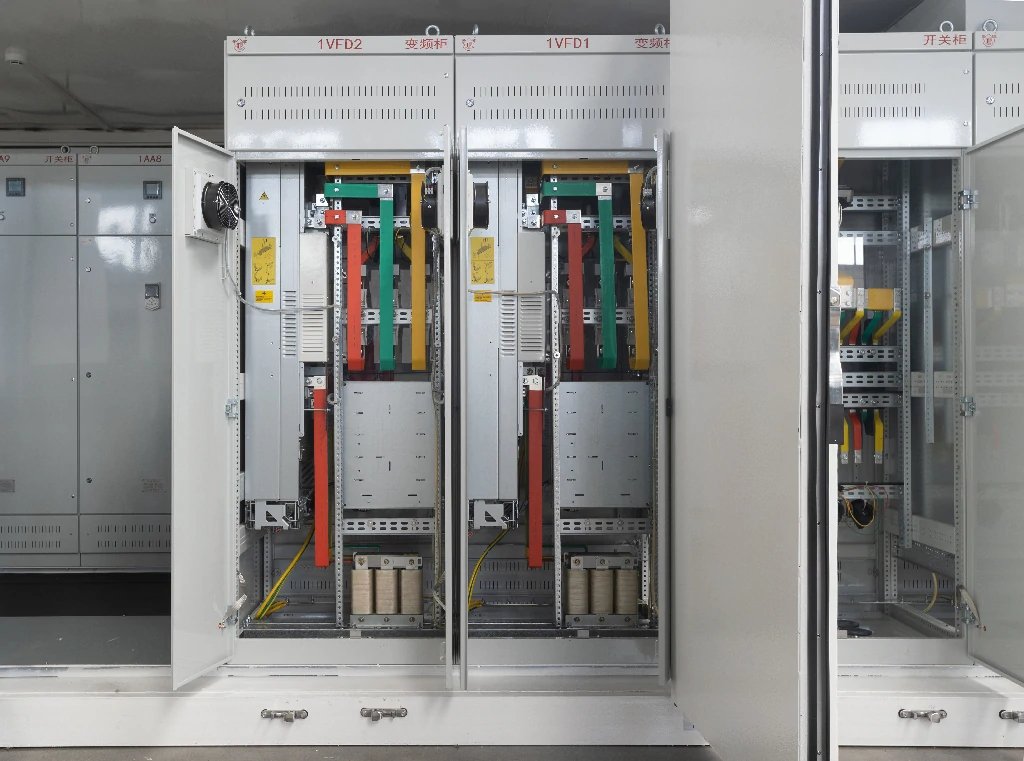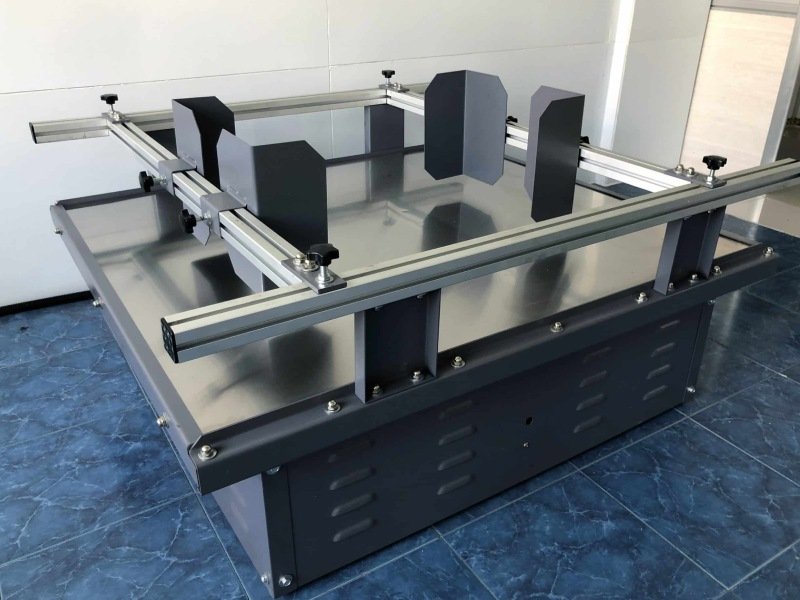Paddle latches are essential components in industrial environments, where reliable and secure access to enclosed spaces is crucial. These mechanisms provide robust locking solutions for doors, panels, and cabinets, offering a simple, intuitive operation. Industrial buyers and engineers value paddle latches for their durability, ease of installation, and ability to withstand harsh conditions. Whether in transportation, equipment housing, or machinery enclosures, paddle latches are favored for their versatility and long-term performance in demanding industrial applications.
Paddle latches are versatile locking mechanisms used extensively in industrial settings to secure access points such as doors, panels, and toolboxes. Featuring a paddle-shaped handle, they engage and release the lock with a simple push-pull motion, making them ideal for high-frequency use. Engineered to endure harsh conditions and constant wear, paddle latches offer quick installation, minimal maintenance, and a high level of security, making them a preferred solution for engineers and industrial buyers. Their benefits include simplicity, ease of use, and robustness across a variety of applications.
In this article, we’ll dive deep into the uses of paddle latches in industrial settings, their step-by-step installation process, and the numerous benefits they offer to engineers and industrial buyers. Here’s everything you need to know.
1. What Is a Paddle Latch?
A paddle latch is a mechanical fastening device specifically designed for industrial use, providing secure locking for doors, panels, and other enclosures. Its distinct feature is the paddle-shaped handle, which operates the latch by engaging or releasing a lock with a simple push or pull. This design allows for both security and ease of operation, especially in environments where frequent access is necessary.
Unlike traditional latches or locks, paddle latches are built for quick, repeated use in demanding industrial environments.
Engineers and industrial buyers typically select them for applications requiring frequent opening and closing of access points, such as storage units, heavy machinery enclosures, or vehicle compartments. The simplicity of operation, combined with their heavy-duty construction, makes them ideal for industrial sectors like transportation, construction, and manufacturing.
Additionally, paddle latches are designed with versatility in mind. They can be used in both indoor and outdoor environments and are often constructed from materials like stainless steel or zinc to resist corrosion, wear, and extreme temperatures. This makes them indispensable for applications where reliability and durability are paramount.
2. Common Industrial Uses for Paddle Latches
Paddle latches have a broad range of applications across various industries. Their primary appeal lies in their balance of security, ease of use, and resilience to environmental stresses. Here are some of the most common industrial uses for paddle latches:
Truck and Trailer Doors:
One of the most prominent uses of paddle latches is in the transport sector. Trucks and trailers require strong, reliable latches that can secure their doors during long journeys. These vehicles experience constant vibration and exposure to harsh environmental conditions, such as rain, dust, and temperature fluctuations. Paddle latches provide the perfect solution by offering:
- Durability: With their sturdy construction, they can withstand the harsh conditions encountered on the road.
- Ease of Use: Their simple push-and-pull mechanism allows truck operators to quickly secure and release the latch, saving time during loading and unloading operations.
- Security: Paddle latches ensure that cargo remains secure during transit, minimizing the risk of accidental openings or theft.
Toolboxes and Equipment Enclosures:
In industrial environments, engineers and technicians need secure yet accessible storage for tools and equipment. Paddle latches are frequently used to secure large toolboxes and equipment enclosures, offering:
- Fast Access: The easy operation of a paddle latch allows workers to access tools and components quickly, which is essential in fast-paced work environments.
- Heavy-Duty Security: Made from materials like stainless steel, paddle latches can withstand the weight and frequent opening associated with heavy-duty toolboxes and equipment cases.
Enclosures and Access Panels:
Industrial machinery and electrical systems often require access panels or enclosures to be opened regularly for maintenance or adjustments. Paddle latches are perfect for securing these enclosures because:
- Quick Maintenance Access: Their simple operation ensures that panels can be opened without the need for specialized tools, allowing technicians to perform inspections and repairs efficiently.
- Resistant to Wear: Given that these panels may be opened multiple times daily, paddle latches are built to endure repeated use without wearing out.
Other notable applications include military vehicles, emergency equipment, and industrial storage systems. The widespread adoption of paddle latches in these industries reflects their reliability and adaptability across a variety of environments.
3. Installation Process: How to Install Paddle Latches
Installing a paddle latch is typically straightforward, but attention to detail is essential to ensure the latch functions optimally and provides the intended security. Follow this step-by-step guide for proper installation:
1. Preparation:
Before installation, ensure that the surface where the latch will be mounted is clean and properly aligned. Accurate measurements are critical, as improper alignment can lead to malfunction or decreased security.
2. Cutting:
Using the latch’s dimensions as a reference, mark the location on the panel or door where the latch will be installed. This step may involve cutting an opening for the latch housing. Use a cutting tool, such as a jigsaw or drill, to create a hole that matches the size of the latch. Ensure that the cut is clean and precise, as an uneven hole could affect the latch's operation.
3. Mounting:
Position the latch in the cutout hole and secure it in place using mounting screws or bolts. Many paddle latches come with pre-drilled holes for easy installation. Ensure that the latch sits flush with the surface to avoid interference with the door or panel's operation.
4. Testing:
After installation, thoroughly test the latch to ensure it operates smoothly. Engage and release the paddle mechanism multiple times to confirm that it locks securely and disengages without issue. If the operation feels stiff or uneven, recheck the alignment and make any necessary adjustments.
5. Final Adjustments:
Once the latch is installed and tested, make any final adjustments to the alignment or tension of the paddle mechanism. This ensures that the latch will perform reliably over time, even in high-use environments.
Proper installation is key to ensuring that the paddle latch functions as expected. When installed correctly, these latches provide robust security and reliable performance across a variety of industrial applications.
4. The Benefits of Paddle Latches for Engineers and Industrial Buyers
Industrial buyers and engineers choose paddle latches for several key reasons, ranging from ease of installation to long-term durability. Here are the primary benefits of paddle latches:
Durability:
One of the top reasons industrial buyers select paddle latches is their ability to withstand harsh conditions. Whether exposed to extreme temperatures, moisture, or chemicals, paddle latches made from stainless steel or zinc resist corrosion and degradation. This makes them particularly useful in outdoor or marine environments where metal components are constantly exposed to the elements.
- Corrosion Resistance: Stainless steel paddle latches are especially resistant to rust and corrosion, making them ideal for long-term outdoor use.
- Shock Resistance: In applications such as vehicle doors, paddle latches are exposed to constant vibration and shock. Their robust construction ensures that they can handle these stresses without loosening or breaking.
Ease of Use:
Unlike more complex locking mechanisms, paddle latches offer a straightforward push-pull operation. This ease of use is invaluable in environments where workers need to access enclosures quickly and frequently. For engineers, the ability to operate the latch with one hand is an important advantage, particularly in situations where time is of the essence.
- Efficient Access: Paddle latches can be opened and closed swiftly, making them ideal for use on frequently accessed doors and panels.
- No Specialized Tools Required: The simplicity of the paddle mechanism means that workers do not need specialized tools or keys to operate the latch, reducing downtime and increasing efficiency.
Security:
While easy to operate, paddle latches do not compromise on security. These latches provide a tight seal, preventing unauthorized access or accidental openings. In industries such as transportation and manufacturing, where protecting equipment or cargo is critical, paddle latches offer a reliable solution for securing valuable assets.
- Locking Options: Many paddle latches come with integrated locks or can be paired with external locks for added security. This ensures that enclosures remain secure even in high-risk environments.
Cost-Effective Installation:
Paddle latches are relatively easy to install, making them a cost-effective solution for industrial buyers. Their straightforward design reduces the time and labor costs associated with installation. This is particularly beneficial for large-scale projects where multiple latches need to be installed quickly.
5. Comparing Paddle Latches to Other Industrial Latch Types
When it comes to choosing the right latch for an industrial application, it’s essential to compare the various types available. While paddle latches are popular, there are other latch types that may be considered depending on the specific requirements of the job. Here’s how paddle latches stack up against other common latch types:
Slam Latches:
Slam latches are another widely used locking mechanism in industrial settings, particularly for applications where quick and automatic closure is required.
- Operation: Slam latches automatically engage the locking mechanism when the door or panel is closed. This is advantageous in environments where workers need to close the latch quickly without taking extra steps to engage the lock manually.
- Strengths: Their automatic locking feature makes them highly convenient for high-traffic areas. They are ideal for enclosures that need to be shut frequently but not necessarily locked, such as gates or machine guards.
- Limitations: While slam latches offer convenience, they lack the manual security control that paddle latches provide. For applications that require a higher level of security or where users need to control when the lock is engaged, paddle latches are a better choice.
Rotary Latches:
Rotary latches are often selected for applications that demand a higher level of security and locking precision. These latches are particularly common in vehicle doors, industrial machinery, and heavy-duty storage enclosures.
- Operation: Rotary latches operate by engaging a rotating component that locks into place, offering a very secure closure. This mechanism provides a strong and durable locking solution, particularly in high-security environments.
- Strengths: The strength of rotary latches lies in their security. They offer superior protection against tampering and can withstand a greater amount of force compared to other latch types.
- Limitations: Despite their security benefits, rotary latches are more complex to install and operate. Their multi-component design can increase the time required for installation and may require more maintenance over time. For applications where ease of use and frequent access are key, paddle latches offer a more practical solution.
Paddle Latches:
Paddle latches strike a balance between the convenience of slam latches and the security of rotary latches. Here’s why they are often preferred in industrial applications:
- Ease of Use: With a simple push-pull operation, paddle latches provide quick and easy access. This is particularly important in applications where doors or panels are opened and closed frequently, such as toolboxes, truck doors, and equipment enclosures.
- Security: While not as secure as rotary latches, paddle latches offer a level of security that is sufficient for most industrial uses. Many models come with integrated locks for added protection.
- Durability: Constructed from materials like stainless steel, paddle latches are designed to withstand the wear and tear of heavy use, making them ideal for outdoor or harsh environments.
- Cost-Effectiveness: Paddle latches are generally easier and faster to install compared to rotary latches, reducing labor costs and installation time.
Choosing the Right Latch:
Ultimately, the decision between paddle latches, slam latches, or rotary latches depends on the specific needs of the application. For high-security applications where tampering resistance is crucial, rotary latches are ideal. However, for most industrial buyers, paddle latches offer the best combination of ease, durability, and security, especially in environments where quick access and frequent use are required.
6. Why Engineers Choose Paddle Latches for Heavy-Duty Applications
Engineers in industrial settings are tasked with selecting components that can withstand challenging environments and constant use. Paddle latches have become a favored solution in heavy-duty applications for several reasons:
1. Longevity in Harsh Environments:
One of the key reasons engineers choose paddle latches is their ability to withstand the elements. In industries like construction, mining, and transportation, equipment is often exposed to extreme conditions, including heat, cold, moisture, and corrosive substances. Paddle latches, particularly those made from stainless steel or zinc-plated materials, are resistant to corrosion and are designed to last in such environments.
- Corrosion Resistance: Stainless steel paddle latches are particularly favored in industries where exposure to water or chemicals is a concern, such as marine applications or chemical processing plants.
- Temperature Tolerance: Paddle latches maintain their structural integrity even under extreme temperatures, which makes them suitable for use in environments such as refrigerated transport vehicles or heat-intensive manufacturing plants.
2. Easy and Quick Access:
In many industrial applications, engineers need to ensure that workers can quickly and easily access enclosed areas. This is particularly important in emergency situations where delays in opening doors or panels can lead to safety risks or operational downtime. The intuitive design of paddle latches allows for:
- One-Handed Operation: Workers can easily operate the latch with one hand, leaving their other hand free to manage tools or equipment. This is especially useful in industries like construction or field service, where efficiency is key.
- Frequent Use: Unlike more complex latch systems, paddle latches are designed for frequent opening and closing, making them ideal for equipment that requires regular maintenance or adjustment.
3. Maintenance and Repair Efficiency:
Engineers often select components that are not only easy to install but also easy to maintain. Paddle latches are low-maintenance, meaning they can withstand frequent use without requiring constant attention. However, in cases where maintenance is needed, repairs or replacements are straightforward:
- Replaceable Parts: Most paddle latches are designed with modular components that can be easily replaced if damaged. For instance, if the paddle handle becomes worn, it can be swapped out without having to replace the entire latch.
- Minimal Maintenance: Regular lubrication of the latch mechanism is often the only maintenance required to keep the latch functioning smoothly. This ease of care makes paddle latches ideal for applications where equipment needs to be kept operational with minimal downtime.
4. Safety and Security:
While ease of use is essential, safety and security remain top priorities in industrial settings. Paddle latches offer the reliability needed to secure doors, cabinets, and panels effectively. In industries where safety is paramount, such as construction, manufacturing, and transportation, paddle latches are trusted for their:
- Tamper Resistance: Many paddle latches feature built-in locks or can be fitted with external locks to enhance security. This ensures that only authorized personnel can access critical equipment or cargo.
- Secure Fastening: Even in high-vibration environments, such as trucks or heavy machinery, paddle latches maintain a tight seal, preventing accidental openings or breaches.
In summary, engineers favor paddle latches for their durability, ease of use, and low maintenance requirements. These features make them a practical choice for securing industrial equipment in harsh, high-demand environments.
7. How to Maintain Paddle Latches for Long-Term Performance
Maintaining paddle latches is critical to ensuring they provide reliable service over time. While these latches are designed for durability, regular care will help extend their lifespan and maintain their functionality in demanding industrial environments. Here are some essential maintenance tips:
1. Regular Lubrication:
Paddle latches feature moving parts that benefit from periodic lubrication. Keeping the latch mechanism well-lubricated ensures that it operates smoothly and prevents metal-on-metal wear, which could lead to premature failure. Follow these steps for proper lubrication:
- Apply Lubricant: Use a high-quality lubricant designed for metal components. Apply a small amount to the moving parts of the latch, particularly the paddle handle and internal locking mechanisms.
- Avoid Over-Application: Excess lubricant can attract dust and debris, which may cause the latch to jam or malfunction over time. Apply only enough to ensure smooth operation.
2. Inspect for Wear and Corrosion:
Given the environments in which paddle latches are often used, wear and corrosion can develop over time. Regular inspections are crucial to identifying any signs of damage early:
- Check the Paddle Handle: Examine the paddle handle for signs of wear, such as bending or difficulty in operation. If the handle feels loose or stiff, it may need tightening or replacement.
- Inspect for Rust: Even stainless steel latches can develop rust if exposed to particularly harsh environments. If rust is found, clean the area with a rust remover and apply a protective coating to prevent future corrosion.
3. Replace Damaged Components:
If any part of the latch becomes damaged or worn, prompt replacement is essential to maintain security and functionality. Paddle latches are often designed with replaceable components, making it easy to swap out worn parts without replacing the entire latch. Common parts to replace include:
- Paddle Handles: Over time, handles may become worn or bent from frequent use. Replacing the handle ensures that the latch continues to operate smoothly.
- Bolts and Screws: The screws or bolts securing the latch may become loose or corroded. Replacing these fasteners ensures that the latch remains securely attached to the door or panel.
4. Test Functionality Regularly:
To ensure the latch is functioning correctly, test it periodically. Open and close the latch several times to check for any resistance or difficulty in operation. If any issues arise, such as difficulty engaging the lock or misalignment, address them promptly by adjusting the installation or lubricating the mechanism.
By following these maintenance tips, engineers and industrial buyers can ensure that their paddle latches continue to provide reliable performance over the long term. Proper care reduces the need for costly repairs and extends the lifespan of the latch, saving both time and money.
8. Key Features to Look for When Buying Paddle Latches
When selecting paddle latches for industrial applications, there are several key features to consider. These features ensure that the latch will meet the demands of the specific environment and provide long-term reliability. Here’s what industrial buyers should keep in mind:
1. Material:
The material of the paddle latch is one of the most important factors in determining its durability and suitability for the application. The most common materials used are:
- Stainless Steel: Known for its corrosion resistance, stainless steel is ideal for outdoor and marine environments. It can withstand exposure to moisture, chemicals, and extreme temperatures without rusting.
- Zinc-Plated Steel: Zinc plating provides additional corrosion resistance, making it suitable for industrial environments that experience frequent exposure to the elements but don’t require the full corrosion resistance of stainless steel.
- Aluminum: Lightweight and resistant to rust, aluminum paddle latches are used in applications where weight is a concern, such as in transportation or mobile equipment.
2. Locking Mechanism:
For applications where security is a priority, consider paddle latches with integrated locking systems. These latches offer an added layer of protection by preventing unauthorized access to the enclosure. Features to consider include:
- Keyed Locks: Some paddle latches come with built-in keyed locks, which allow only authorized personnel to open the enclosure.
- Padlock Hasps: Other latches are designed with hasps that accommodate padlocks, giving users the flexibility to use their preferred lock.
3. Mounting Options:
The installation process can vary depending on the design of the latch. Buyers should consider how the latch will be mounted to ensure it fits the intended application:
- Flush Mount: Flush-mounted latches sit level with the surface of the door or panel, providing a sleek appearance and reducing the risk of accidental damage.
- Bolt-On or Screw-On: Some latches are designed to be bolted or screwed directly onto the surface, making installation straightforward and easy.
Summary:
Paddle latches provide a versatile and durable locking solution for industrial buyers and engineers. Their ease of use, combined with their robust construction and long-term durability, makes them ideal for applications in transportation, construction, and heavy-duty storage. By choosing the right materials, considering security features, and maintaining them properly, paddle latches will provide reliable performance in even the harshest industrial environments.








